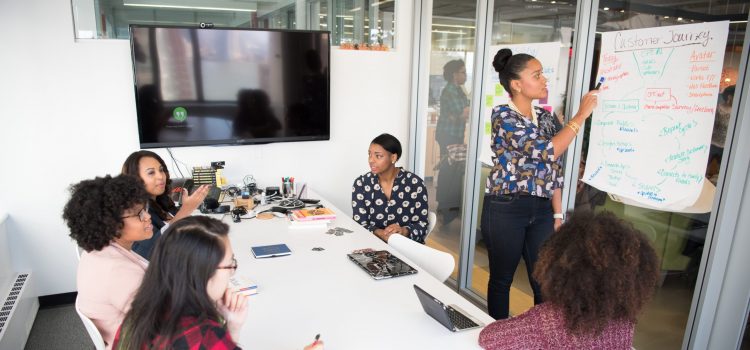

This article is an excerpt from the Shortform summary of "Getting Things Done" by David Allen. Shortform has the world's best summaries of books you should be reading.
Like this article? Sign up for a free trial here .
Do you want to know how to brainstorm effectively? Can learning to brainstorm make you a better planner or worker?
Learning how to brainstorm effectively can help you come up with ideas that benefit your business and your life. But knowing how to brainstorm is more than being able to come up with ideas—it’s also about following through.
How to Brainstorm Effectively
Brainstorming is another how, referring not to conduct but to the logistics and steps to accomplishing your project. How to do brainstorming correctly is an important part of the process.
When you brainstorm, it’s important to know how to brainstorm effectively. Follow these three rules:
1) Don’t criticize, judge, or challenge ideas. You can be most creative when you’re not self-censoring or restricting yourself by thinking about what could be wrong with one idea or another. In a group setting, create an open and inclusive atmosphere where people feel comfortable to throw ideas out and see what sticks.
People can still point out what might be problematic with an idea, but they should frame their thoughts in a way that leads to follow-up ideas, rather than simply shutting down an idea or train of thought.
2) Aim for quantity over quality. Cast a wide net for ideas. The more ideas you put out there, the better your odds of having some great ones in the pile.
3) Analyze and organize later. Trying to analyze and organize your ideas as you come up with them will stifle your creativity. Let loose now, knowing that you’ll organize your thoughts in the next step of the process.
You can learn how to brainstorm effectively by focusing on small projects in your head, but writing down your ideas is useful for the same reason it helps to capture all your tasks in an external place: It gets them out of your head. When you’re brainstorming, writing down your ideas frees up your mind to keep thinking creatively and come up with even more ideas.
Since brainstorming produces ideas big and small, in random order, there are several techniques you can use to capture your ideas that are less structured and linear than a list, including:
- Mind mapping
- Patterning
- Clustering
- Fish boning
- Webbing
Organize
Once you’ve emptied your head of all the ideas and questions during the brainstorming process, you’ll begin to see a natural order and structure to them. This is the next step in how to do brainstorming.
When you organize, follow these three steps:
- Determine the most important aspects that must happen in order for the project to be completed and successful.
- Sort them into components, priorities, and sequences.
- Fill in the necessary detail.
Depending on the project and your preference, you can achieve this with quick bullet points, outlines, or project-planning software.
Next Actions
Once you know how to brainstorm effectively, you can focus on next actions. This is the stage when you determine what can actually be done now, and who’s going to do it.
If you have a project with multiple components, take a look at whether there are next actions for each of them; sometimes, you won’t be able to start work on one component until you’ve made progress on another component. Across the scope of the project, identify every next action that you (or someone on your team) can start moving on now.
If you’re working on a team, you don’t need to know every person’s next action. Just make sure each person has her assignment, and she can determine her next actions. If you’re waiting on someone else to finish something before you can take your next action, keep track of it on a project-specific Waiting For list (we’ll talk more about Waiting For lists in Chapter 7).
Next actions are the last stage in how to do brainstorming. This stage brings issues and questions to the surface, because you have to break things down to each minute action. If you discover holes in the planning and details, your next action might be some aspect of planning—brainstorming ideas, getting feedback from others, or planning meetings.
If you need more clarity on the project in order to determine next actions, move up the natural planning process to get things better organized, brainstorm more ideas, or get a better grasp of your vision or purpose. On the other hand, if you see that there’s not enough movement on the project, move down; flesh out and organize ideas so that you can determine next actions and actually start doing them.
Knowing how to brainstorm effectively can be a huge help in life. You’ll contribute more to group projects, and you’ll also be able to tackle your own life and projects more effectively if you know how to brainstorm.

———End of Preview———
Like what you just read? Read the rest of the world's best summary of David Allen's "Getting Things Done" at Shortform .
Here's what you'll find in our full Getting Things Done summary :
- Why you're disorganized and your to-do list is a mess
- The simple workflow you can do everyday to be more productive than ever
- How to take complicated projects and simplify them






